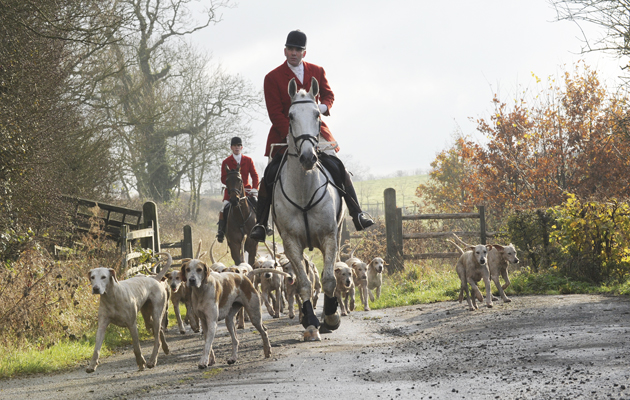To get the best out of hunting side saddle, prior lessons are a must. The number you need will depend on rider fitness and natural aptitude for riding sideways. There is no shortcut and even the most accomplished side saddle ladies hone their skills with lessons, as it’s easy to slip into bad habits.
Most people who ride regularly astride will pick up riding side saddle in a lesson or two and then it’s up to you how quickly you put your skills into practice on the hunting field.
Ideally, your horse should be used to taking a side saddle and schooled so the transition from walk to canter is seamless; trotting is uncomfortable for the rider and not good for the horse’s back.
“Udder judder is a ghastly sight. You need a really good bra, or two, and corsets are good to hold everything in place,” says Jinks Bryer, a side saddle instructor and the daughter of the late Betty Skelton, president of the Side Saddle Association for 30 years.
“A true side saddle horse will never lead on the left leg, preferring to canter only on his right” adds Jinks. “He will transit from walk to canter seamlessly and should canter in hand at pace with the hounds.”
When jumping, less interference from the rider often ensures a better jump. You will both find it easier to jump off a longer stride out of a flowing canter; a bascule can be uncomfortable to sit to. For this reason a thoroughbred-type will often be a better side saddle horse than a warmblood. Hedges tend to jump better than timber and, according to side saddle doyenne Martha Sitwell: “If you’re wrong go long, if you’re wronger, go longer!”
Finding the right meet
Hunting side saddle can be very social and people are pleased to see you.
Try to choose a suitable meet — ideally one that is not too hilly, and woodland with low branches is to be avoided for obvious reasons. You don’t want a long hack from home or parking before you start tour day either, so try to be dropped off at the meet or park close by.
Many hunts now hold specific side saddle days. The Quorn’s opening meet fields about 30 side saddle ladies from the UK and abroad. Your local hunt secretary should be able to tell you if your pack has a day planned.
What to wear and where to find it
A habit and a side saddle are the key elements — etiquette dictates the rest. Safety is a priority and those choices are yours.
Tradition dictates that a top hat and veil with hunting boots and one spur should be worn after the opening meet and the same with a bowler, tweed habit and tie and brown boots before the opening meet.
Many riders will nowadays change to safety helmets just before moving off. Light-coloured gloves should always be worn — dark-coloured gloves used to signify mourning and hence the wearer shouldn’t really be seen on the hunting field.
8 top tips for hunting side saddle
1. Have your saddle professionally fitted by a master saddler and ask them to check it internally. Most saddles are old and broken trees are common if they have been sitting in the attic for a long time. Ensure your straps are secure and in good condition.
2. Try to “go” with the horse, ride tight to the leaping head for a more comfortable day.
3. Core strength is key. Pilates, ballet or sit-ups will help to prepare you well.
4. To avoid getting a sore knee, bandage up your leaping head with vet wrap or a sponge.
5. Invest in comfortable pants — “no thongs”, according to Emma Brown of the Quorn.
6. “People tend to bang into you from the offside where your leg isn’t, so ensure your horse is used to a crowd,” stresses Belinda Wilkins, whose daughter Caroline hunts aside with the Chiddingfold, Leconfield and Cowdray.
7. Don’t try to open or close a gate. “Either jump it or get someone to do it for you,” says Lucy Holland, who took up hunting side saddle 13 years ago.
8. According to Jinks Bryer, if men approach you from the near side, “ignore them. You don’t turn left to talk to people when riding aside — your weight could damage the horse’s back.”
For more information, visit www.sidesaddleassociation.co.uk
This article was first published in Hound & Hound magazine (13 November 2014)

Download the H&H hunting directory for £1.49
Missed last week's special hunting issue of the magazine? Get a PDF version of the H&H hunting directory here

A beginner’s guide to trail hunting: all your key questions answered

Taking a young horse hunting: dos and don’ts
Introducing a young or new horse to the hunting field can be a daunting prospect. Follow our advice to make
